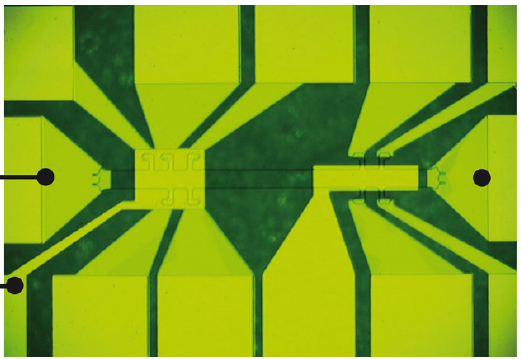
Photo of the electronic device used to measure the high electron mobility in ZnO. Reprinted by permission from Macmillan Publishers Ltd. Nature Materials (2010). doi:10.1038/nmat2874
Even if you don’t know much about this compound, everybody is familiar with zinc oxide (ZnO). It is a white powder used as the UV-light absorbing component in many sun lotions (and the part of the sun lotion that leaves those white marks on clothes), as an antibacterial agent in some baby powders, in rubbers where it promotes vulcanisation, or as white pigment in colours, and for many other products.
And even now ZnO remains one of the most widely studied oxygen-containing oxide compounds — and this is not going to change anytime soon. In a paper that is now published in my journal Nature Materials, Atsushi Tsukazaki, Masashi Kawasaki and colleagues from Tohoku University in Japan accomplished growing ZnO to such high purity that its electrons can move at extremely high speeds. The material is so clean that it shows quantum effects that are only known from a few very pure compounds. Darrell Schlom from Cornell University in the USA, who works on the growth of oxides, is quite enthusiastic: “Oxides have the unfortunate stigma of being associated with dirt, bricks, and toilet bowls. I love this rags to riches story because it shows that oxides can be clean, so clean that with ZnO they have broken into the most exclusive and elite club that was reserved for just half a dozen of the world’s cleanest materials. This is the greatest achievement of the year for oxides!”
Indeed, the ZnO thin films that Tsukazaki and colleagues grew are so clean that electrons in them move so fast that the researchers were able to observe the so-called Fractional Quantum Hall Effect (FQHE), a first for any oxide compound. The FQHE is a sign that electrons are in quantum states that can be used in quantum computing, and by showing the FQHE, ZnO has established itself as a candidate material for such schemes.


October 17, 2010
2 Comments